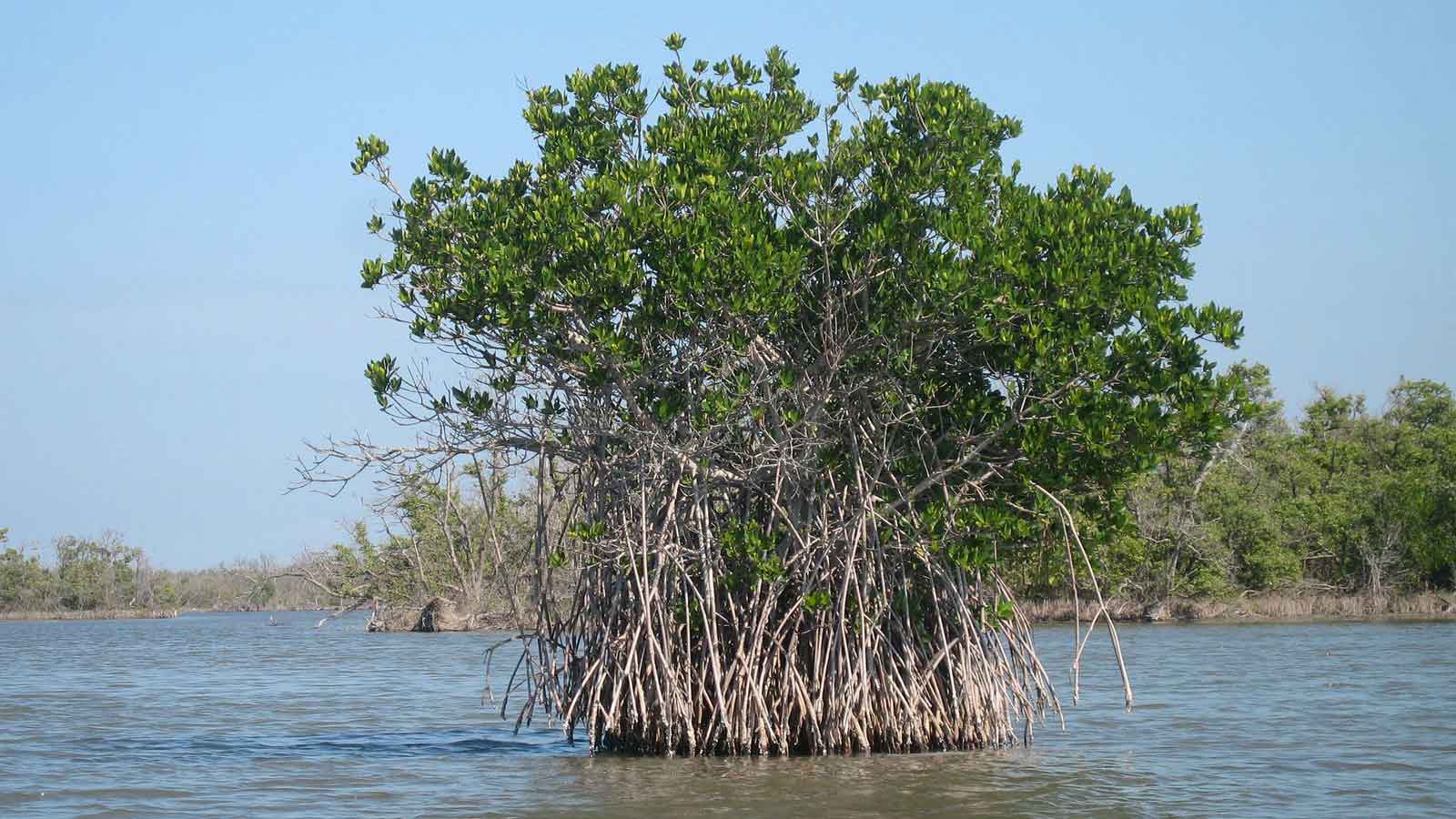Mangroves expand to tropical and sub-tropical coastline of the world which supports the rich biodiversity from fungi to mammals. Mangroves are considered as the most productive ecosystem due to their ability to fix and store huge amount of carbon. Mangrove productivity is estimated to be equal to the productivity of old-grown tropical forest. While, mangroves are rich with carbon, some studies suggest that they are limited with nutrients. To attain productivity, mangroves have the fascinating ability to recycle essential nutrients. Nutrient availability in mangroves varies from site to site but nutrient limitation is counted as an important factor for limiting mangrove productivity. Nutrient availability in mangrove ecosystem depends on abiotic and biotic factors such as inundation pattern, tidal fluxes, freshwater input, anthropogenic pollution, soil condition and plant species. In this blog, we will try to cover that how nutrients are important for mangrove ecosystem.
In mangrove ecosystem, nutrients are stored in soil and above ground parts, but majority of nutrients are stored in soil. Often, mangrove surface is waterlogged which makes the soil acidic, anoxic and saline. Hurricane, storm and tidal movement act as an important part for the delivery of nutrients in this ecosystem. Further, carbon rich root system, litter fall decomposition in anoxic soil make this ecosystem also rich with organic matter and nutrients. Here tidal duration and frequency effect mainly nutrients movement and mangrove soil condition that allow mangroves to adopt strategies in conserving nutrients. For nutrients availability, redox state of soil cannot be neglected. Redox soil state varies from specie to specie and is influenced by bioturbation and mangrove root system.
Sodium, potassium, boron, sulphur and manganese are not limiting nutrients for mangroves except nitrogen and phosphorous because mangroves are evolved in oligotrophic tidal environment. In the case of copper and iron, their limitation has been observed in controlled experimental studies. Potassium (K+) is an important nutrient for mangrove forests. It helps to regulate osmotic pressure, protein synthesis and photosynthetic process. Availability of K+ can fluctuate in mangroves, but a severe deficiency of K+ leads to loss in chlorophyll and disturbance in photosynthetic processes. Sodium (Na+) presence also affect the uptake of K+ by plants which causes the disruption in osmotic regulation. In few mangroves’ studies, K+ deficiency was observed but it did not affect the productivity of mangrove forest as N and P limitation did. It is important to know that environmental factors and nutrients take part interactively in mangrove nutrition.
Nitrogen (N) and Phosphorous (P) are considered primary nutrients to limit the growth or the productivity of mangrove forests. In comparison to the tropical forest, N use efficiency values are at the upper range in mangrove forest but in the case of P use efficiency, the values are within the range in contrast to tropical forest. Nitrogen is considered as a primary nutrient that controls growth in marine ecosystem but few studies also claim that N and P have an equal contribution in limiting growth. Nitrogen and phosphorous limitation depend on exchange rate of water with the ocean and riverine system which correlates with the tidal movements as well. Further, nitrogen and phosphorous limitation also rely on species, soil fertility, salinity, soil texture and soil redox status.
Nitrogen is found commonly in the form of ammonium in the mangrove soil. Ammonium absorption in mangrove soil particles is less than the terrestrial forest that make it easy for plants to uptake this type of nitrogen. Mangrove soil is abundant with denitrifying bacteria and denitrification rate for ammonium production is higher in this ecosystem due to anaerobic condition and organic matter content. Nitrogen fixation by microbial communities and ammonification contribute significantly to produce ammonium. Phosphorous is found in immobile form in mangroves which cannot be used by plants directly. Here, symbiotic relation between plant roots and fungi helps to use P in solubilised form. Arbuscular mycorrhizal (AM) fungi are present commonly in all ecosystem soils. But in mangrove ecosystem it occurs in less saline area which help the plants for the uptake of immobilised nutrients. In high salinity areas due to absence of AM, it is difficult to uptake nutrients which pose a threat for plants due to toxicity of heavy metals in soil.
There are lot of studies that have observed mangrove productivity decline due to nutrients limitation. Here it is very important to know and discuss about mangrove nutrient productivity models. With these models, productivity of that area can be estimated. Fry and Cormier (2011) developed these models to estimate the productivity of Hawaiian island Florida mangrove forest. Further, these models were applied in Matang mangrove Forest Reserve (MMFR) by Khan et., al (2019) to find out the productivity of MMFR. Mangrove leaf nutrients and stable isotopic analysis were performed in this study.
(Fry & Cormier, 2011)
Productivity = d13C X nutrients
Productivity = salt X nutrients
To know about these productivity models, readers can consult the this


